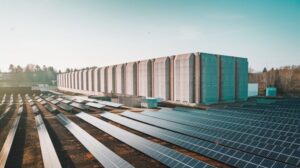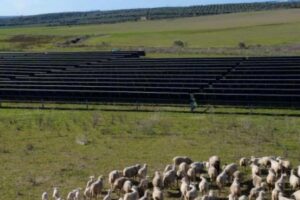‘Motown’ for EVs, wind turbine tech, and public power’s setback — This Week in Cleantech

Ford’s Rouge Electric Vehicle Center in Dearborn, Michigan. The company announced that it will separate its electric vehicle and internal combustion engine divisions. (Courtesy: Ford)
This Week in Cleantech is a new, weekly podcast covering the most impactful stories in cleantech and climate in 15 minutes or less. Produced by Renewable Energy World and Tigercomm, This Week in Cleantech will air every Friday in the Factor This! podcast feed wherever you get your podcasts.
This week’s episode features The Hill energy and environment reporter Zack Budryks for a deeper look at Maine’s public power referendum.
The U.S. Southeast is becoming a hub for foreign auto and battery manufacturers, with $70 billion in investments coming in since 2010. In recent years, the IRA has turbocharged that investment. Southern states offer subsidies, ready sites and an available workforce to attract automakers, making them favorable locations for foreign developers’ EV manufacturing facilities.
Now that we are seeing more EV manufacturing happening down South, this threatens Detroit’s top spot for car manufacturing.
Traditional wind turbines can have over 150-foot blades and 40 truckloads of concrete at the base, making it a huge construction project. Airloom Energy developed a wind turbine that’s only about 82 feet tall, with about twelve 33-foot blades. Airloom’s turbines are designed to cut the cost of a turbine by 90% by using fewer materials and an easier installation process.
We will know more about the outcome of this design post-pilot project, which will be built by 2025.
Watch the full episode on YouTube
The carbon removal industry needs financing, but the current level of contributions from individuals and a handful of corporations is insufficient to meet decarbonization goals. At this point, it still takes hundreds of dollars to remove just 1 ton of carbon.
But governments are looking into how they can accelerate the industry’s scaling. The IRA has a tax break for carbon removal and the Biden Administration just announced $1.2 billion for carbon-removal hubs in Texas and Louisiana.
This story uses Julia Child as an example of how the gas industry has been an expert at working public opinion towards entrenching their interests for decades. Similar to the tobacco industry, the gas industry has a well-funded PR machine and has funded its own research studies to disprove the negative health impacts, such as respiratory illnesses and heart disease, of indoor air pollution from gas stoves.
If the desire to continue cooking with gas discourages people from going all-electric in their homes, that could have a big impact.
On Tuesday, Maine voters rejected a ballot initiative that would have replaced the state’s electric utilities with the first state consumer-owned utility.
Supporters of the initiative were reacting to Maine’s expensive energy costs and frequent outages. Opponents argued it would be too pricey to pay off the existing private utilities and that having an elected board would result in people with no grid experience taking charge.
Help make This Week in Cleantech the best it can be. Send feedback and story recommendations to ThisWeekInCleantech@tigercomm.us. And don’t forget to leave a rating and review wherever you get your podcasts.
Join us every Friday for new episodes of This Week in Cleantech in the Factor This! podcast feed, and tune into new episodes of Factor This! every Monday.
This Week in Cleantech is hosted by Renewable Energy World senior content director John Engel and Tigercomm president Mike Casey. The show is produced by Brian Mendes with research support from Alex Petersen and Clare Quirin.




